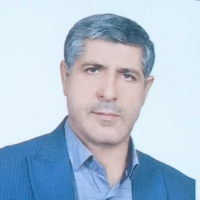The Modification of Myths in Allusions of Behbahani, Neyestani, Bahmani and Monzavi’s New Sonnets
A Myth is the narrator of the saint history and the story which states the saint destiny of primates. Myths, are the crystallization of collective reason, the reflection of the human unconsciousness and the symbolic manifestations of ethnic and collective fears and hopes and aspirations. In the old texts of criticism and rhetoric, there is no mentioning of the place of myth in poetry; the only topic that can be incorporated into the subject of myth is the allusion. In this research, two basic questions are considered. First, what are the attitudes and approaches of Behbahani, Neyestani, Bahmani, and Monzavi especially in the allusions contained in their new-sonnets to the myths? And what are the most important types and styles of Modification of Myth in their new-sonnets?
The use of linguistic approaches and theories in reading texts has been one of the most important forms of literary criticism in recent decades. One of the results of using linguistic findings in literary criticism is relying on the text itself and identifying the constituents and units of narration for form recognition. Myth and mythical allusions, as well as any art work and any narration, have elements and components. In every allusion, there are components or bricks that coalesce to create allusions.Today, the theory of "intertextuality" is one of the major structuralistic and narratological approaches to texts, especially literary texts, and their critique. According to the theory of intertextuality, no text is self-sufficient; it relates to earlier texts. Genette (1980) divides intertextuality into two categories of explicit intertextuality such as citations, speech (quotation) and adaptations, and hidden (implicit) intertextuality. Based on Genette’s belief, allusion is a kind of intertextuality which has the least explicitness.In the early twentieth century, French linguists introduced the "general theory of stereotypes" in the sense of ready-made linguistic structures. Permyakof, the Russian linguist and author, called proverb, tale, pejorative, aphorisms, anecdotes, ironies, stories, myths, jokes, and generally the molded and prefabricated phrases of language as the reproductive elements of the language (or stereotypes), and using or transmitting them to subsequent generations maybe possible only in their reproduction or to remember and express them. Productive and creative texts, are against the reproductive elements of language.
In this paper, the modification of myths used in new-sonnets of Behbahani, Neyestani, Bahmani, and Monzavi is investigated in a descriptive-analytic manner. On this basis, using the foundations of formalist literary criticism, structuralism, post-structuralism, and looking at the intertextuality theory and the general theory of stereotypes, while expressing the approaches of the aforementioned poets to the myth, the types of modification of myths in the works of this new-sonnet composers are explored, classified and investigated
The frequencies indicate that the highest percentage of the use of mythical allusions are in Hussein Monzavi's new-sonnets. After Monzavi, Manouchehr Neyestani, Mohammad Ali Bahmani, and Simin Behbahani, respectively, accounted for the highest percentage of mythical allusions.Since narratives are not merely happening, but are told by a person and narrated from a particular point of view, the pre-textual elements may be changed willingly or unintentionally. So are the myths. In the process of biological and intellectual development and evolution of civilization and culture, one often proceeds from passive myth to philosophical and intellectual reflection on myths and then on the denial of mythical and mystical aspects (modification of myths) or their criticism, analysis, and re-reading (mythology).The new-sonnet composers, in general, and mentioned poets, in particular, use mythical allusions in the same way as the traditional view and style of poetry, in proportion to the content, theme, and atmosphere of the poem as well as the type of myth. In this approach, the poet is a so-called faithful narrator who does not make a significant change in the implications, and uses these allusions merely as a context for imagination:The two Zahaki snakes were, two veins flowing up to his headWhich opened two bloodthirsty mouths for my aware brain (Behbahani, 2003, p. 951)In such cases, the new-sonnet composers sometimes are limited to comparison and simile.In an active and innovative approach, the poet turns away from the depositary narrating of mythical allusions and inserts the mythical allusion in his speech with a range of variations, from mixing the myths to knowing them, historical and realistic myths (elimination of myths), changes in characters and events and other mythological elements, and rereading and recounts the mythical elements (modification of myths) and even deconstruction of mythical implications; therefore, the modification of myths is from the members of the active and initiative approach.New-sonnet composers through their different approach to myths and mythical allusions and manipulation on tem seek to innovate in the construction and organization of myths, in other words, in the pursuit of "modification of myths". In this approach, by adopting and manipulating myths and changing their designs and styles, they create a novel and inhabitual narrative.
By studying the new-sonnets of Behbahani, Neyestani, Bahmani, and Monzavi based on the principles of intertextuality theory and the general theory of stereotypes, it can be concluded that neo-sonnet composers often have a dualistic approach to myths and mythical allusions. Sometimes the same passive and cliché view and style deal with the mythical allusions. In this approach, they do not make much difference to the structure and content of the narrative. And sometimes, they take an active approach, meaning they innovate with elimination of myths or modification of myths. Modification of myths in allusions used in new-sonnets of Behbahani, Neyestani, Bahmani, and Monzavi in ways such as inverting the main mythical elements, shifting the priority of the dual opposites in them, enhancing the myths and less important elements, changing the mythical design, eliminating the mythical elements from its nature and knowing ineffectiveness of some of the myths in modern situations has taken place.
New Sonnets , Myth , Modification of Myth , Allusion , Behbahani , Neyestani , Bahmani , Monzavi
- حق عضویت دریافتی صرف حمایت از نشریات عضو و نگهداری، تکمیل و توسعه مگیران میشود.
- پرداخت حق اشتراک و دانلود مقالات اجازه بازنشر آن در سایر رسانههای چاپی و دیجیتال را به کاربر نمیدهد.



